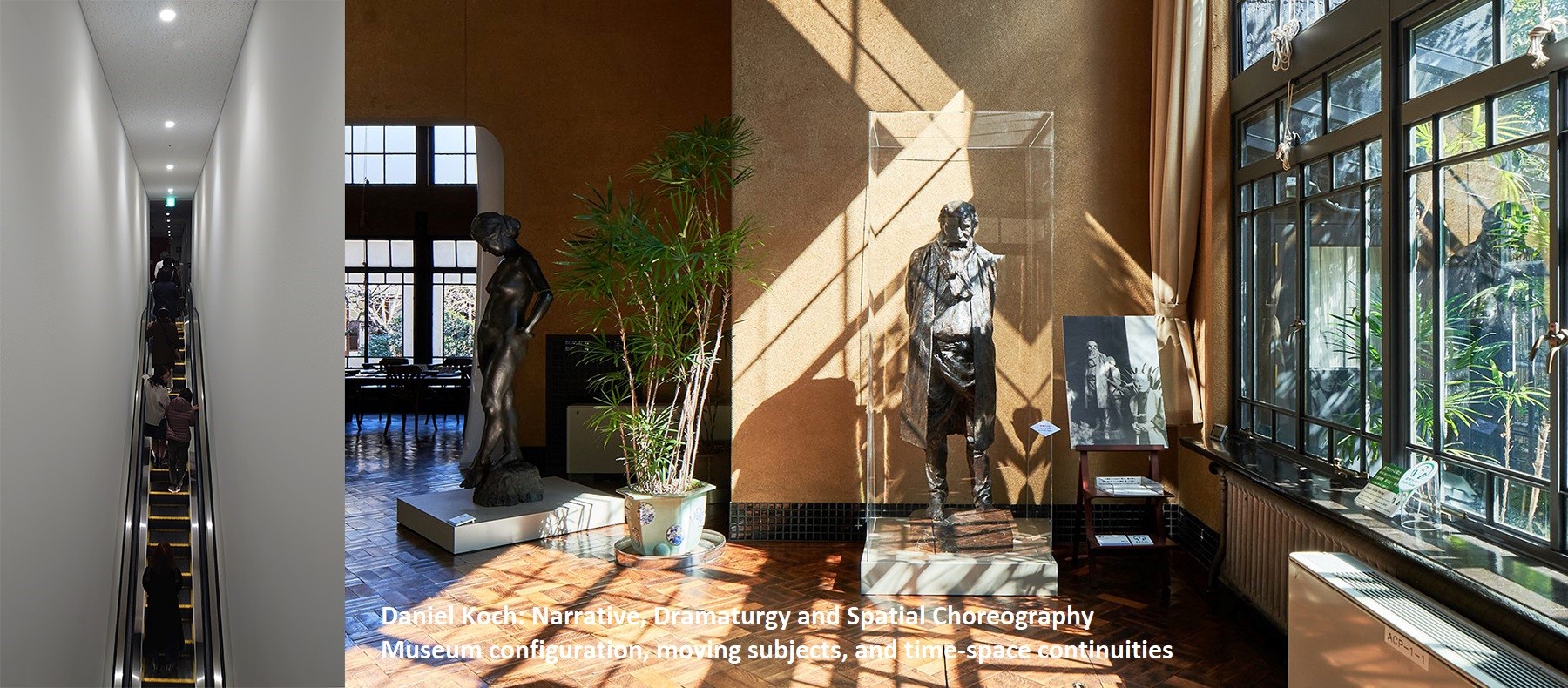Daniel Koch: Narrative, Dramaturgy and Spatial Choreography

Senior faculty member, researcher Daniel Koch will present material for a chapter of a forthcoming book, John Peponis (ed.), Museum Configurations, to be published by Routledge in the autumn of 2023.
Tid: Fr 2023-03-31 kl 13.15 - 15.00
Plats: A608
Videolänk: https://kth-se.zoom.us/j/67042903633
Språk: English
In the seminar, Daniel Koch will present the first draft that was recently submitted, together with some additional notes on background work, and visual material. The purpose is to share ongoing work, and collect comments and feedback on what is most valuable, what is of most interest, and, of course, what may need sharpening, clarification or to be removed -- the final chapter should be about half as long as the draft.
Abstract
Narrative, Dramaturgy and Spatial Choreography
Museum configuration, moving subjects, and time-space continuities
The interrelation between visitors, collections, and architectural space in museums is a richly researched subject, in part due to the richness of the setting and the ways architecture and curatorial strategies change over time and space. It is also due to the obviousness through which such practices have intents shaped through space: museums may be amongst the spaces most clearly tasked to define, communicate and represent ideas and values through their spatial layout and arrangement of collections.
This chapter intends to address an often-missing link in these studies, which is to, combine studying the socio-spatial situatedness of the museum experience with how structuring of movement participates in the narratives of the visits. Central throughout the study is a focus on how relations between visitors are framed as particular performative figures of movement and occupation, how they create choreographies over time and space, and how these performativities are differentiated and communicated through the museum as viewing mechanism.
Empirically, the chapter builds on studies of a range of museums: The Asakura Museum of Sculpture, the Metropolitan Museum of Art and the Nature and Science Museum in Tokyo, Kiasma and Amos Rex in Helsinki, The Modern Museum, Natural History Museum, Artipelag, and Millesgården in Stockholm, and MAAT in Lisbon. Conceptually, the chapter is primarily focused on developing a deeper, richer, and structured notion of movement, so as to enable a more nuanced and precise discussion of the interplay between people, architecture, and curation. It aims for an increased understanding related to the strengths of configurational analysis of space, which as of yet tends to operate with remarkably non-configurational as well as disembodied considerations of movement. The discussion employs concepts such as choreography, rhythm, figure and gesture to iteratively generate a deeper understanding of how movement is diversified, characterized and controlled in the ways curatorial and architectural practices contributes to museum culture both locally and globally.
More information about the edited volume can be found at the KTH Social group page: https://www.kth.se/social/group/kth-higher-seminars/event/chero-eliassi-phd-thesis-seminar-50/